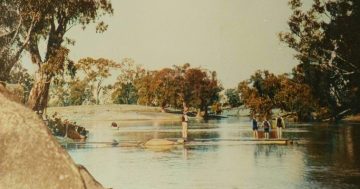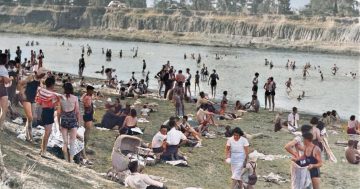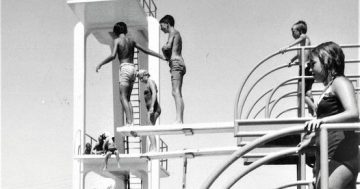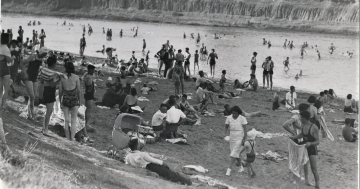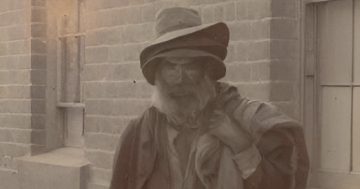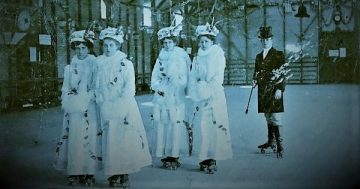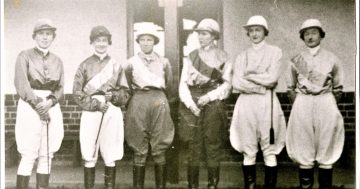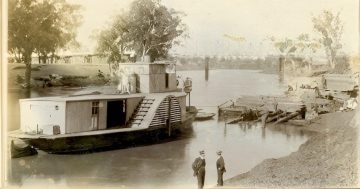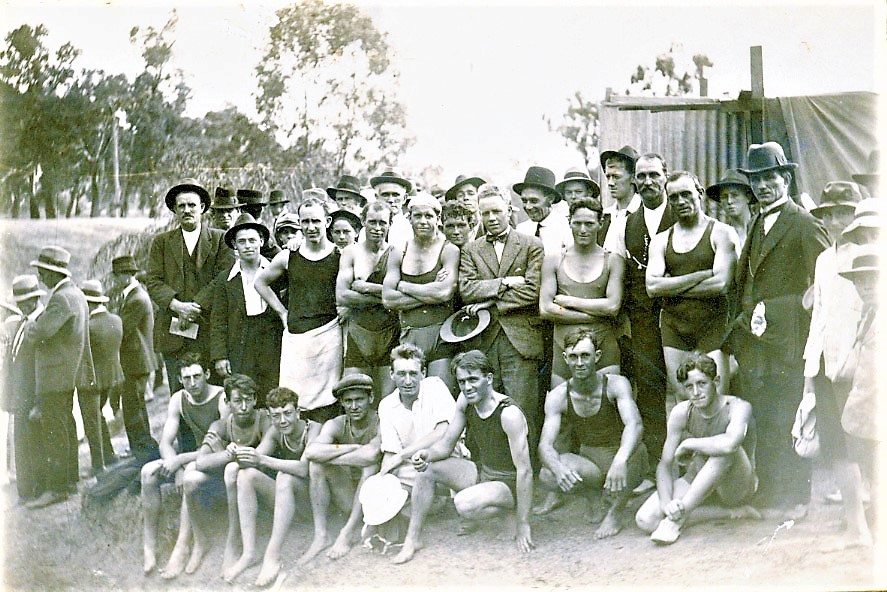
Gentlemen swimmers in Wagga. Photo: Museum of the Riverina – Wagga Swimming Club collection.
As Wagga emerges from a scorching start to 2023, the team from the Museum of the Riverina takes us back to somewhere cool, the banks of the Murrumbidgee River in the early 1900s.
As you can see in this photograph, there are no female swimmers or onlookers.
In the early days of Wagga’s European settlement, it was considered ”improper” for females to bathe in the Murrumbidgee River. However, during the hot summer months, boys, men and some ”loose women” often took a dip, as for many, this was the only time they bathed the entire body, since domestic bathing facilities were uncommon in Wagga until the late-19th century.
A swimming club was established in Wagga in 1897 and permission was obtained from the Wagga Borough Council for a bathing area behind St John’s Church to be roped off.
By 1899 the club had 150 members, which they claimed was the largest of any club of its type in NSW. Because the council refused to erect permanent dressing sheds, a large marquee was erected for the women and a hessian stand for the men. The wearing of mandatory knee-to-neck costumes was enforced!
Looking at the style of the men’s costumes, this photo most probably dates to about World War I and at this time, women would still have been wearing knee-length swimsuits.
Around this time, in February 1915, 78km away in Gundagai, The Daily Advertiser reported that: “Gundagai people are only just beginning to realise the value of their beautiful river. The ‘bogey’ hole near the railway bridge is patronised by big crowds every evening. The most noticeable feature is the large number of ladies who indulge in the healthy natatorial art. At the end of the season Gundagai ought to possess the largest number of female swimmers of any inland town.”
As if this wasn’t salt enough in the wounds of poor old gender-divided Wagga, a Sydney paper then followed on with: “Good old Gundagai! We are glad to learn that there is at least one town where the Romeos and Juliets bathe in perfect harmony and that it possesses such a sylvan bogey hole. So very unlike Wagga, where the inhabitants have been tearing each other’s hair for the last three months regarding the ‘propriety’ of the lads and lassies disporting together. So as far as we can learn they are still at it. However, there is no mock modesty about Gundagai. May the old town turn out a whole team of Fanny Duracks in the sweet bye and bye.”
In 1912, swimmer Fanny Durack had become the first Australian woman to win an Olympic gold medal in the pool and was considered the world’s greatest female swimmer at the time.
Information and photograph supplied by Michelle Maddison, curator at the Museum of the Riverina.



